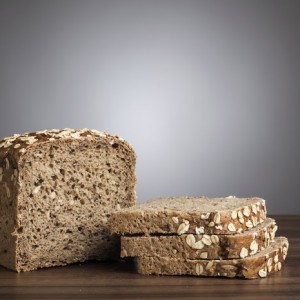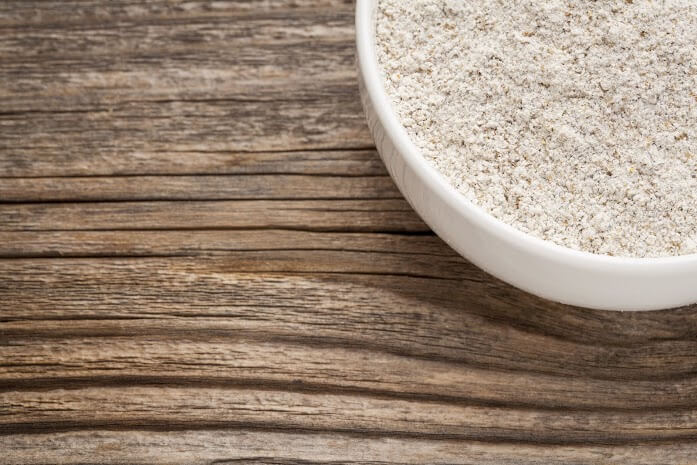The 5 Best Gluten-Free Baking Flours
If you’re gluten-free, you know that baking that way is a completely different kitchen game than the traditional one. If you’ve ever removed gluten from your diet, I’m sure a sad movie montage of delicious pastries played over and over in your head. You thought you’d never get to really taste food like you had before and that all the desserts you’d come to love were a thing of the past. Luckily, the industry has made big strides in alternative ingredients in recent years and restaurant ranging from Applebees to Taco Bell are offering menus for specialty diets.
But what about the times you actually want to do some baking yourself? There’s a lot of differences between gluten-free baking and regular baking so many aspects have to be taken into account. Converting recipes can be a pain because flour densities are different. You often times have to mix a number of different flours which have a tendency to take up prime pantry space, and it can be difficult to figure out what flours work best with what recipes. From what we’ve learned, gluten-free baking is definitely a trial-and-error process.
That’s why we’ve compiled this list to make your life a little easier, so you can spend more time having fun in the kitchen and less stressing over measurements and lopsided cakes. Once you know what flours are the best ones to bake with, you have the starting off point you need to tie on your apron and dive in to your mixing bowls.
Rice Flour
This will be your best friend when it comes to gluten-free cooking and baking. Rice flour has a lot of advantages when it comes to substituting wheat, barley, rye and the other “allergen” grains. It has a very mild taste, easy consistency and plays well with all other flours you mix it with. What’s most interesting is baking with rice flour isn’t a new concept. Certain culture’s cuisines, like Indian and Japanese, have been using it for centuries to make noodles, pancakes and breads. Some popular dishes include rice noodles used in pad thai and stir frys, dosa, rotti and steamed rice cakes. Since the rise in gluten-intolerance, rice flour has become one of the most widely used flours for pretty much every baking venture. It can be used to make cakes, brownies, muffins, cookies, breakfast bars and also makes for a great coating for a fried-food alternative. Some of our favorite gluten-free rice flour recipes include pumpkin whoopee pies, waffles, funnel cake and delicious apple crumble. Even if you’re gluten-free or not, rice flour can be a great substitute or fun way to liven up some old recipes. We highly recommend it!
and steamed rice cakes. Since the rise in gluten-intolerance, rice flour has become one of the most widely used flours for pretty much every baking venture. It can be used to make cakes, brownies, muffins, cookies, breakfast bars and also makes for a great coating for a fried-food alternative. Some of our favorite gluten-free rice flour recipes include pumpkin whoopee pies, waffles, funnel cake and delicious apple crumble. Even if you’re gluten-free or not, rice flour can be a great substitute or fun way to liven up some old recipes. We highly recommend it!
Corn Flour
Interesting fact: you can do a lot more with corn flour than cornbread. Definitely different than rice flour, corn flour has that distinct “corn” flavor that’s kind of hard to cover up. But really, why would you want to? It’s so amazingly delicious and unique and can add an entire other level of depth to one of your favorite recipes. Use some corn flour for your favorite blueberry or cranberry muffin recipes, as the base for cake or as a way to spice up some of your favorite battered and fried recipes. I mean, how amazingly delicious does a corn flour and honey frosting cake sound? Corn pancakes are also an amazing sweet or savory alternative for breakfast, lunch, dinner, breakfast for dinner, dinner for breakfast or whatever it is crazy kids are into nowadays.
Chickpea Flour
Made famous from falafel, it turns out there’s a lot more you can do with this stuff than was previously assumed. Like, a lot. One, it’s not only for savory recipes. You can do it up with the sweet ones and have them be amazingly delicious. For instance, you can make a mean chocolate chip cookie using this stuff. Healthy baking gets a whole new meaning when you use this flour for a flavorful carrot cake. If you’re not familiar with it, chickpea flour is made from ground chickpeas also known as garbanzo beans. This legume is full of great proteins and nutrients too, something the flour does still retain some of. It works well as an egg substitute in vegan baking and, interestingly enough, also as a gentle exfoliant for the skin. Definitely give chickpea flour a try the next time you feel like being adventurous with your baked goods.
Buckwheat Flour
Another one of the most popular gluten-free baking flours, buckwheat is probably also the most familiar. Unlike most other gluten-free flours in western cuisine, buckwheat is actually fairly common and used pretty frequently in French cooking. And here you thought absolutely everything in France was tainted with gluten! And even  though “wheat” is in its name, it doesn’t have much in common with the other grain and is without a doubt gluten-free. One of the most common recipes that uses buckwheat flour is for savory crepes, a popular dish in France that has also crossed over to many different cultures. Pancakes are also commonly found to contain the flour. Definitely look for them on the menu the next time you grab some breakfast. I would also highly recommend trying out buckwheat noodles the next time you make a trip to the grocery store. They’ll blow your mind.
though “wheat” is in its name, it doesn’t have much in common with the other grain and is without a doubt gluten-free. One of the most common recipes that uses buckwheat flour is for savory crepes, a popular dish in France that has also crossed over to many different cultures. Pancakes are also commonly found to contain the flour. Definitely look for them on the menu the next time you grab some breakfast. I would also highly recommend trying out buckwheat noodles the next time you make a trip to the grocery store. They’ll blow your mind.
Pre-Mixed Flour
When all else fails, mixed flour is a great substitute for all your gluten-free baking needs. People have been messing around with perfect combinations of flours for years and there are many brands that carry their own all-purpose gluten-free flour. They’re especially nice when it comes to the really sweet baked goods like cakes, cupcakes and even muffins and some breads. Since gluten-free is a somewhat new food movement, the exciting thing is that there’s so many unchartered territories that need to be conquered. It makes for a lot of fun baking adventures for those looking to really dig in to and try something new and exciting.
Learn more about our Online Healthy Baking Program!


